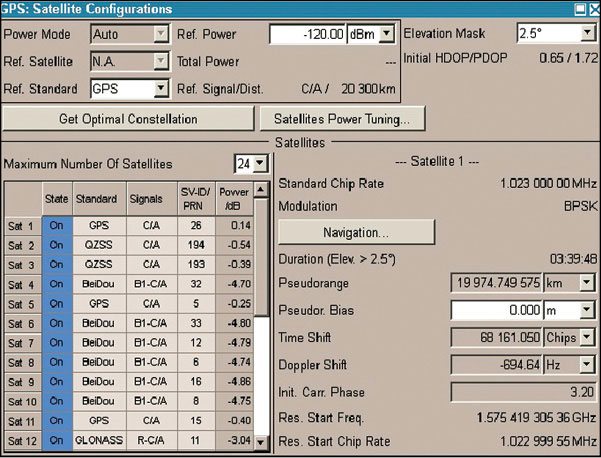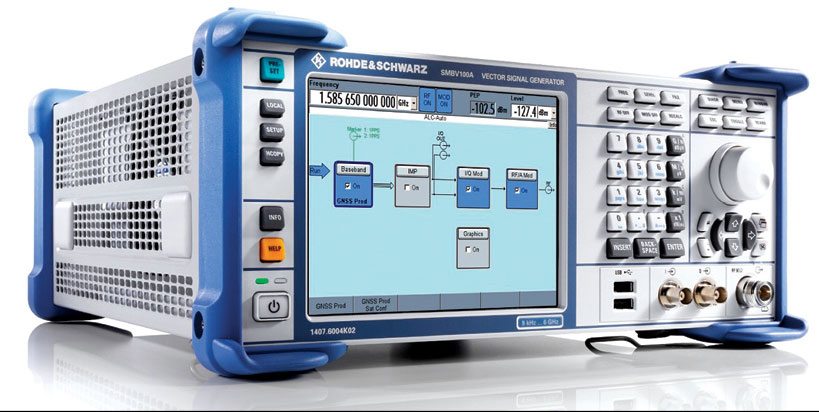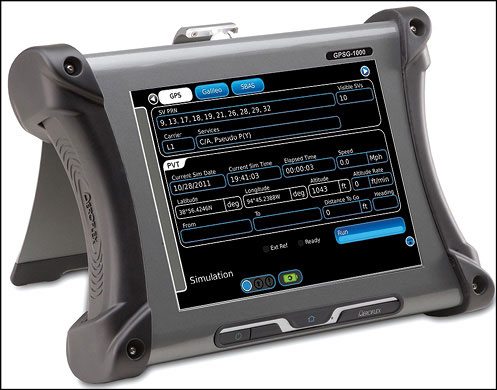Monics, on the other hand, extends interference detection and signal characterisation. It provides simultaneous manual and automatic monitoring with an easy and efficient user interface. The automatic monitoring compares the expected and actual frequency spectrum, and accordingly alerts the operator in case of abnormalities. It also automatically verifies normal transponder and carrier values like EIRP, C/N, symbol rate and centre frequency to expected values.
Tester for satellite simulation
For distinguishing the performance of a GNSS receiver, several standard tests such as location accuracy, re-acquisition time, sensitivity tests and time to first fix (TTFF) are available. Test runs usually contain complete sequence of tests, each with a distinct scenario. But many global navigation satellite system (GNSS) simulators provide users with only a stipulated number of predetermined scenarios for reiteration. Satellite simulators that empower engineers to simulate a wide range of scenarios should ideally be a part of their satellite testing equipment.
Rohde & Schwarz recently introduced a GNSS simulator in their R&S SMBV100A vector signal generator series, which aims at making GNSS receiver testing comparatively easier by providing users with boundless customised scenarios to execute receiver tests under differing conditions. With a few keystrokes, a user can generate complex with up to 24 satellites including BeiDou, hybrid Global Positioning System (GPS), Quasi-Zenith Satellite System/satellite based augmentation system constellations and Galileo as well as flexible scenarios including atmospheric modelling, moving scenarios and dynamic power control.


A few receiver tests might especially need extended simulation times. In such cases, some satellites advance towards the horizon and vanish from sight, while other satellites ascend into view. The auto-localisation mode in SMBV100A automatically supervises the satellites’ settings and rising, thereby ensuring the availability of GNSS signals for as long as these are needed or throughout the entire simulation run.
Designing realistic user environments including ionospheric effects, vehicle attitude, antenna characteristics and tropospheric influences is achievable with this generator as these are some of the key parameters that can affect the availability and quality of GNSS signals. SMBV100A vector signal generator is mostly favourable for car infotainment systems and mobile phone manufacturers who use GNSS modules in their systems.
Touchscreen, portable simulator for testing GNSS receivers

Simulators are an essential tool for developing satellite operations. Portable simulators provide on-the-go simulation of satellite conditions in a restrained environment.
Aeroflex’s (now a Cobham company) GPSG-1000 is a portable and ruggedised, single-carrier and multichannel simulator for integration, validation and test of GPS and Galileo GNSS receivers for a variety of applications. It can simulate a single 3D point in time or 3D dynamic motion by utilising the available 6-channel or 12-channel configurations. Considering its price point, the simulator aims to fill the market gap between low-end, single- or twin-channel simulators and high-end simulators. Quite recently, Aeroflex also released a new version of operational software for this simulator.
High-frequency portable devices for future satellite applications
To make testing more streamlined, cost-effective and flexible, handheld analysers emerged, and the demand for such instruments grew in the early 2000s. Today’s handheld analysers are a growing market as these integrate multiple technologies and provide engineers with higher connectivity and access to data. From research and development to deployment and maintenance, requirement for low-cost, multi-function test solutions is primarily driven by upcoming satellite programmes to bring the Internet of Things and global broadband access.
Keysight recently introduced a 50GHz FireFox handheld analyser for full characterisation of today’s challenging satellite systems. Also, with 5G and the release of new satellite frequency bands, we could expect manufacturers churning out handheld analysers supporting even higher frequencies in the future.










